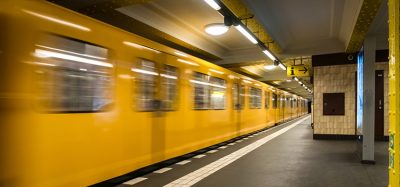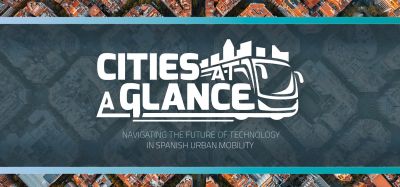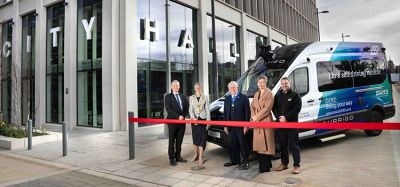Updating communications systems with TETRA
- Like
- Digg
- Del
- Tumblr
- VKontakte
- Buffer
- Love This
- Odnoklassniki
- Meneame
- Blogger
- Amazon
- Yahoo Mail
- Gmail
- AOL
- Newsvine
- HackerNews
- Evernote
- MySpace
- Mail.ru
- Viadeo
- Line
- Comments
- Yummly
- SMS
- Viber
- Telegram
- Subscribe
- Skype
- Facebook Messenger
- Kakao
- LiveJournal
- Yammer
- Edgar
- Fintel
- Mix
- Instapaper
- Copy Link
Posted: 28 October 2010 | James Abbott, Technical Editor | No comments yet
Terrestrial Trunked Radio (TETRA) is a digital trunked mobile radio standard developed by the European Telecommunications Standards Institute (ETSI). The purpose of the TETRA standard was to meet the needs of traditional Professional Mobile Radio (PMR) user organisations such as the military, those responsible for public safety at, for example, large sports events, and commercial and industrial organisations. The public transport sector is one such user.
Terrestrial Trunked Radio (TETRA) is a digital trunked mobile radio standard developed by the European Telecommunications Standards Institute (ETSI). The purpose of the TETRA standard was to meet the needs of traditional Professional Mobile Radio (PMR) user organisations such as the military, those responsible for public safety at, for example, large sports events, and commercial and industrial organisations. The public transport sector is one such user.
Terrestrial Trunked Radio (TETRA) is a digital trunked mobile radio standard developed by the European Telecommunications Standards Institute (ETSI). The purpose of the TETRA standard was to meet the needs of traditional Professional Mobile Radio (PMR) user organisations such as the military, those responsible for public safety at, for example, large sports events, and commercial and industrial organisations. The public transport sector is one such user.
The air interfaces, network interfaces as well as the services and facilities are specified in sufficient detail to enable independent manufacturers to develop infrastructure and radio terminal products that would fully interoperate with each other. For example, radio terminals from different manufacturers can operate on infrastructures from other manufacturers.
The ability for full interoperability between different manufacturers’ products is a distinct advantage of open standards developed by ETSI.
“As the TETRA standard is supported by several independent manufacturers this increases competition, provides second source security and allows a greater choice of terminal products for specific user applications,” says the TETRA Association, a trade body of suppliers in the field.
TETRA technology is supported by over 20 manufacturers of core equipment as well as many more suppliers of test equipment, peripheral products, specialised on-board units, applications, software and so on.
TETRA in public transport
Over 100 TETRA systems are in use on mass rapid transit, metros and railways across Europe, Asia and Latin America. A large number of these networks have been successfully operating for several years, providing valuable services and operational efficiencies for customers.
The TETRA standard has inherently fast call set-up times of around 300 milliseconds; this compares favourably with other digital radio communications technologies. These fast call set-up times are guaranteed for all types of call including mission critical features, safety features (e.g. emergency calls, listening at help points) and security features (e.g. authentication, encryption, radio disabling). All of these are critical for the safe and efficient operation of railways and mass rapid transit systems.
In addition, status messaging, short data services (SDS), circuit mode data and packet data services are available in TETRA for data and control applications to be implemented to assist in train operations. These services have been routinely implemented in the TETRA rail projects to-date for real-time applications. These applications include passenger emergency alarm/communications, train PA (public address), train PIS (passenger infor – mation display system), train health monitoring, and many more.
Rail battle
The railway industry presents an interesting case study for differing communications technologies. The European Commission in Brussels is promoting GSM-R (Global System for Mobile Communications – Railway) as the next generation radio system for secure communications. GSM-R is a part of the European Rail Traffic Management System (ERTMS), and part of its role is to convey vital signalling information in track-to-train communications for the European Train Control System (ETCS) that is now being introduced in countries across the continent. The more advanced versions of ETCS dispense with lineside signals, with the driver using information presented in his cab rather than a visual check outside. Secure radio transmission of signalling data is essential in these circumstances.
While GSM-R is making progress on main line railways, many urban systems are adopting the TETRA standard for radio transmissions. For example, the St Petersburg Metro in Russia has adopted TETRA for its unified radio system. Jointly implemented by Motorola and its Russian partner RCC Mobile Radio Systems (St Petersburg), the project is providing workers on the system with digital mobile radios. The project is one of considerable size, with over 60 base stations in underground and above ground metro stations, and will have up to 3,000 users.
This division between main line and metro may be over-simplistic. “It would be easy to segment the rail industry such that light rail (or metro schemes) equals TETRA; and heavy rail equals GSM-R,” says Duncan Swan, a Partner at Analysys Mason, a consultancy firm supplying strategy advice, operations support and market intelligence in telecoms and related fields.
Mr. Swan continues: “But that is to under – estimate the intense competition that continues between the suppliers of the two technologies.” In Asia and Latin America, the vast majority of the metro projects seeking new mobile radio solutions are tending to specifically request that TETRA be provided as the bearer of choice; yet in Australia there has to-date been a tendency towards GSM-R being the preferred bearer in both Sydney and Brisbane. Looking back to Europe, GSM-R underpins the trans-European railway network with more-and-more rail miles being covered on a daily basis; yet the 800km Moscow to St Petersburg rail link utilises TETRA, as does the Taiwan high-speed rail link and an increasing number of routes across China.”
Thus the picture is more complex than it might appear at first sight. “What can be guaranteed is that the battle will continue – which can only be healthy from a competitive procurement perspective,” says Mr. Swan. “GSM-R was developed as a bearer capable of supporting safety critical communication requirements – and in Europe specifically ETCS (Electronic Train Control System). However, if TETRA can be proved to support ETCS then perhaps there will be an alternative bearer choice for those railway operators mandated to support train signalling,” he adds.
Communications upgrade in London
In 1999, a Private Finance Initiative project known as Connect was put in place to provide a modern communications system on the London Underground network. Worth £1.2billion over 20 years, the Connect contract was awarded to CityLink Telecommunications Ltd, a special purpose company established to raise approximately £350 million of private capital and to manage all aspects of the project. Shareholders in CTL include Thales, Fluor and Motorola.
Installation work was completed in 2008. Although not groundbreaking, with other metro systems having installed TETRA technology earlier, this is one of the biggest applications in the world. The new radio system comprises 12,000 users, using 7,500 hand portable radios and 1,400 train radios located in drivers’ cabs at both ends of the 700-strong LU train fleet. The transmission system consists of 11 core sites across the LU network which act as hubs for the radio system, and 1,450km of optical fibre and conventional cabling.
Before the installation of Connect, each Underground line effectively operated its own radio system. Connect delivers an integrated system which also provides a platform for the radio networks of emergency services. Having an integrated communications across all London Underground’s depots, stations, trains and offices is immensely useful, helping to maintain safe operations in large stations such as King’s Cross, where five Underground lines intersect. There is spare capacity in the transmission network to allow for commercial applications such as a moving image advertising facility.
Procuring new systems
“Any procurement exercise must be requirements driven – with requirements carefully divided into being business critical (important for the business to function effectively), mission critical (information that must be delivered in a timely manner), and safety critical (unless these requirements are met the transport network cannot operate),” advises Mr. Swan of Analysys Mason.
He continues: “It is important that requirements to operate across borders and on a common infrastructure provided by multiple operating companies are fully understood and any limitations, approvals, and conformance requirements clearly set out. And finally, in the transport sector, care must be taken with regard to the actual environment into which the radio system will have to be installed, be that control and base equipment or radio terminals. Not all of the world’s transport systems requiring new radio communications equipment are brand new – and it is implementing today’s technology in yesterday’s environment that often causes the most angst and incurs significant costs.”
Mr. Swan advises potential purchasers: “Be sure to be clear in any procurement just what size, space and power constraints must be considered!”








